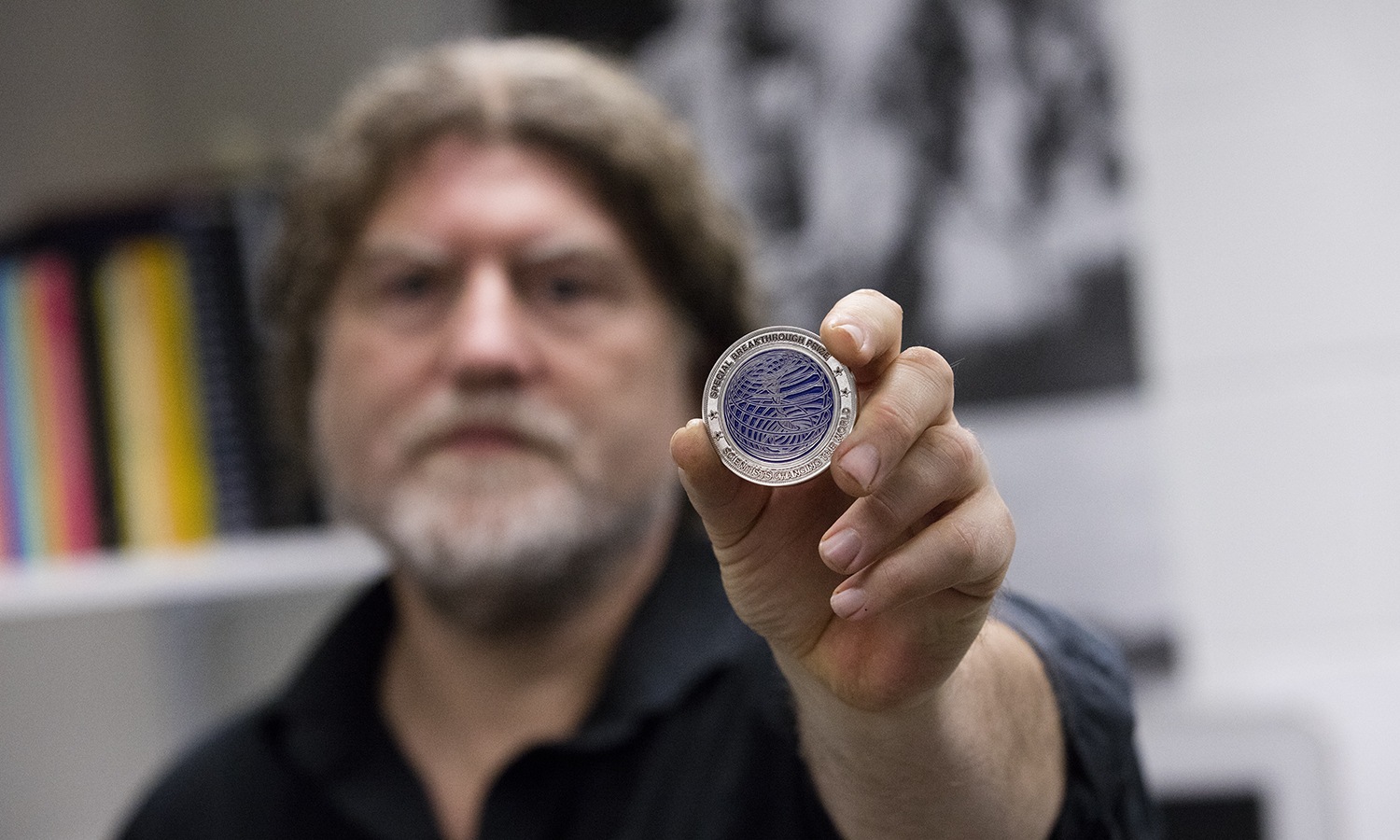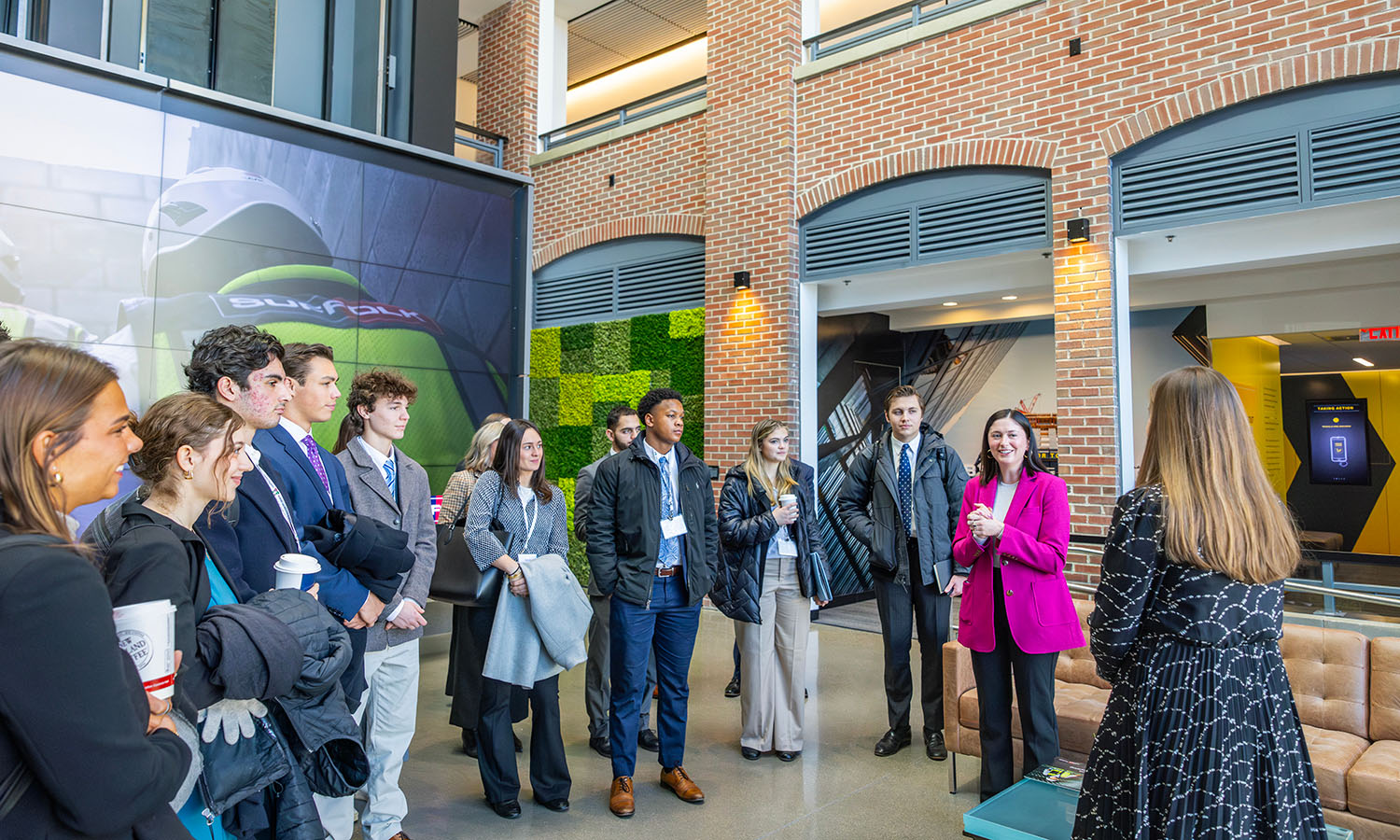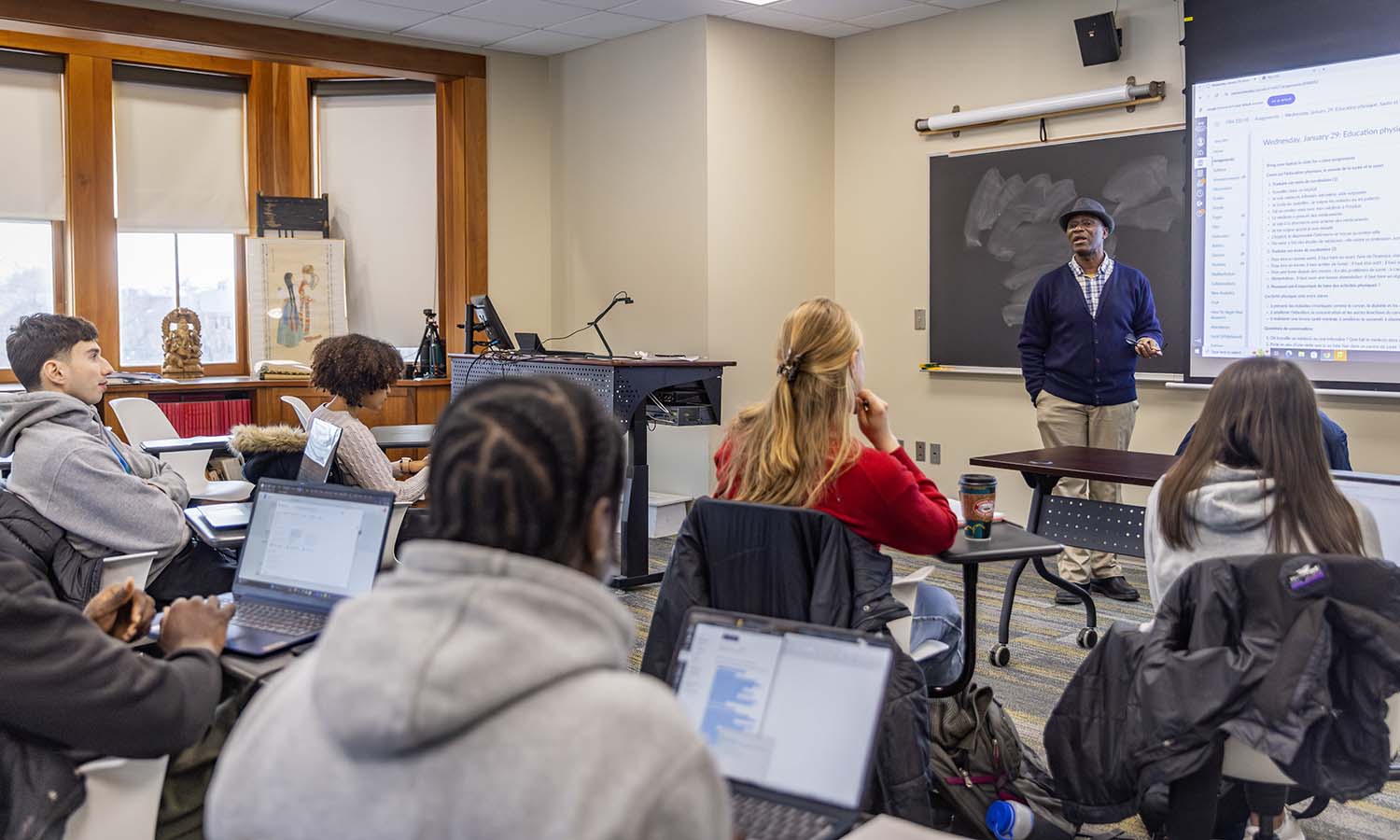
HWS News
3 February 2017 • Faculty • Research • STEM Discovery Receives Breakthrough Prize
Associate Professor of Physics Steven Penn is among the international team of scientists being recognized this month for their pioneering discovery of gravitational waves. The honor is part of the prestigious and highly selective Special Breakthrough Prize in Fundamental Physics through which Penn has been awarded a “Breakthrough Prize: Scientists Changing the World” medal lauding the landmark research.
The $3 million Breakthrough Prize is being shared between the Laser Interferometer Gravitational-Wave Observatory (LIGO) founders, Ronald W. P. Drever, Kip S. Thorne and Rainer Weiss along with the authors of the Physical Review Letters article presenting the historic discovery, including Penn, who will equally share $2 million of the prize. The celebrated research has also received the Kavli Prize in Astrophysics, the American Astronomical Society’s Bruno Rossi Prize, the Shaw Prize in Astronomy and a Gruber Prize. In addition, the discovery was named the 2016 “Breakthrough of the Year” in Science (American Association for the Advancement of Science) and “Highlight of the Year” of in Physics (American Physical Society).

“It’s amazing what people can achieve if they put their minds together and do something intellectually meaningful for humanity,” says Penn, an MIT-trained physicist who played a major role in the mirror substrate and coating design for the LIGO research project. “We are absolutely elated that we have detected gravitational waves, inaugurating the field of gravitational wave astronomy. We anticipate our observatories will reveal a great many wonders about the universe.”
In 2015, using LIGO detectors, scientists from the LIGO Scientific Collaboration (LSC) for the first time directly observed ripples in the fabric of spacetime, or gravitational waves, arriving at the earth from a cataclysmic event in the distant universe.
Physicists concluded that the gravitational waves were produced during the final fraction of a second of the merger of two black holes some 1.3 billion years ago, producing a single, more massive spinning black hole. The collision of two black holes previously had been predicted, but never observed. The discovery confirmed a major prediction of Albert Einstein’s 1915 general theory of relativity. In 2016, the collaboration announced that they had detected gravitational waves for the second time. Scientists are currently analyzing additional “candidate” events.
“The LIGO Collaboration spans the globe, and we are proud of our internationalism,” Penn says.
The LIGO collaboration represents more than 1,000 scientists from universities around the United States and in 14 countries. More than 90 universities and research institutes in the LSC develop detector technology, operate the interferometer and analyze data. Approximately 250 students are strong contributing members of the collaboration. The LIGO-Virgo detector network includes the LIGO, Virgo and GEO600 interferometers.
In their testimony before Congress after the detection, the LIGO leadership took special note of the significant challenge presented by coating thermal noise, Penn’s area of research. Penn says that difficult experimental problems remain to be solved before gravitational wave observations are frequent and cover the full range of the universe.
Currently Penn chairs the LSC’s Coating Working Group, a subcommittee of the Optics Working Group, which is developing coatings for future detectors. Penn is a co-coordinator of a multimillion-dollar grant proposal to establish a LSC Center for Coating Research that will develop coatings for Advanced LIGO Plus, or A+, and future detectors. The A+ upgrade plans include improved mirror coatings and squeezed light, a process of adjusting the photon distribution to circumvent the quantum uncertainty limit.
Penn joined the LSC in 1998 while a postdoctoral fellow at Syracuse University. Hobart and William Smith became one of the first small colleges to join the LSC when Penn took a position in the Physics Department in 2002. Penn’s original LSC research was on the mirror design for Advanced LIGO. He discovered how to significantly reduce the thermal noise in the material fused silica, which led to the selection of fused silica for the Advanced LIGO mirror substrates and suspensions.



